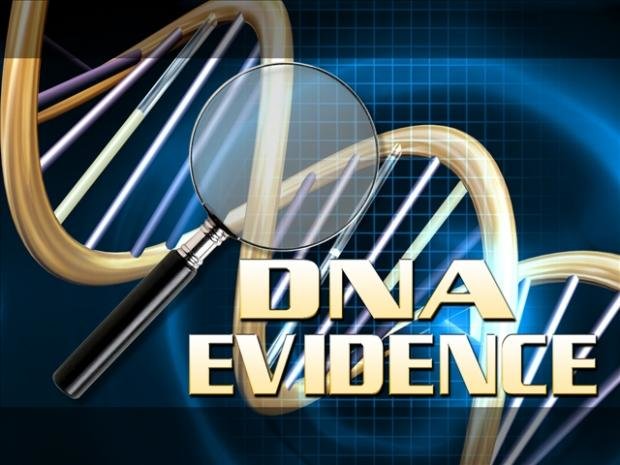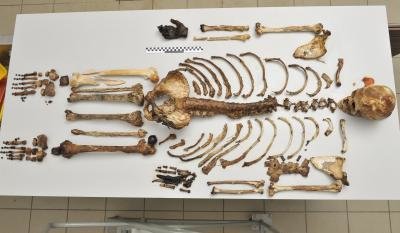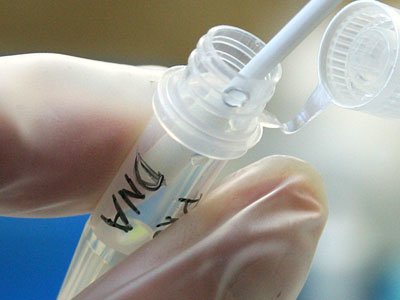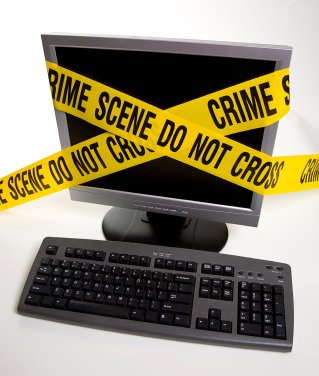Analysing of DNA evidence has recently gained popularity for its use in forensic science. This is in part thanks to its widespread and detailed mention in television programs such as CSI, where the analysis of DNA evidence is carried out in order to resolve murder cases and identify dead bodies at crime scenes. In order to understand how important DNA testing is in the courtroom, we need to understand the basic mechanism of how humans transmit heredity. DNA or deoxyribonucleic acid is the code used by living beings to store their genetic information. Because humans reproduce sexually (unlike some plants, for example, which reproduce through asexual cloning), they are ably to have amazing genetic variability not only from generation to generation but even between siblings. Sexual reproduction (because of the huge number of possibilities involved) gives each individual a unique DNA code. Even siblings do not inherit exactly the same half of each of their parents—it is random. “Identical twins,” though more alike than all other humans on earth and not distinguishable with traditional DNA testing are also unique even from each other, but it was not until 2014 with ultra-deep next generation sequencing that we have been able to distinguish them genetically.
 Image: freedomsphoenix.com
Image: freedomsphoenix.com
There’s a reason we sexually reproduce as a species–we get a lot out for our reproductive contribution. With each generation of sexual reproduction, we have the possibility for what we call biological crossover, in which the chromosomes of the parents (which they received from their own parents) are mixed or scrambled—and the way it is done is also the reason average siblings are only about 50% identical to each other (at about 50% of their locations on the chromosome, they are half identical to each other, at about 25% of their locations they are completely identical, and at about 25% of their locations, they are completely not-identical). Also, we have to remember that at the end of all of that, children are only half identical to each parent–half of each parent’s DNA wasn’t used to make that child! Different combinations will be used to make their siblings.
This biological crossover or diversity is very useful for a population as it makes them not as easy to wipe out with either infectious disease (not all of them have the same vulnerabilities) or from a single mutation (that if asexual would spread to all offspring). Through the study of DNA it is possible to obtain information that allows us to identify dead individuals or even to prove genetic relationship, which is something similar to what is done in traditional fingerprinting.
There are various ways of analyzing DNA by making use of various components of the DNA sequence of an individual. Many leading DNA testing companies and laboratories including , homeDNAdirect and others will have DNA testing facilities able to test using multiple techniques. The three most common methods of analyzing of DNA evidence are:
DNA analysis with microsatellites
Genetic markers called microsatellites are analyzed to perform many DNA studies and analyses. In the United States, we tend to use a set number of highly polymorphic areas of the DNA, areas which have a lot of variability from person to person in order to simplify identity—a bit like looking at the fingerprint pattern lines near the center of a person’s digit, where the lines form a whorl or a loop or an arch. The result from the study of several microsatellites is called a genotype analysis, and this turns out to be unique for each individual. The probability of finding two people randomly with identical genetic markers is almost non-existent. As a result these studies are used in forensic science for identifying individuals. An example would be the analysis of a genetic sample (blood, semen, vaginal fluids, or several hairs) left behind by a criminal at a crime scene. If a suspect is in custody, this sample can be used (by conducting ) and matched to the DNA of the suspect kept in custody in order to determine if it was from the same person.
DNA analysis can also be used to establish the paternity of a child. Paternity testing has not only served to clarify personal concerns that arise from our biology (men do not directly give birth to their own children, so paternity is questionable) but also has played a vital role in dispensing justice during cases involving acknowledgment of paternity, with consequent assignment of rights and obligations by the court to the biological father. Generally, microsatellites are used to investigate close putative relationships exactly such as an ostensible father and child.
DNA evidence has also been used for the identification of decomposing bodies. This is often in cases where their state of decomposition is beyond recognition based upon macroscopic (those traits we can see with the naked eye) physical characteristics. A genetic sample from the remains of the deceased can be compared with samples of the alleged parents or children of the missing person. Anything from teeth to bone samples can be used in such cases.
DNA analysis using Y-chromosome testing:
Unlike the pairs of 22 autosomal chromosomes (note that people with aneuploidy such as Down’s syndrome have an extra copy of a chromosome) we inherit from our parents, we also inherit two sex chromosomes, which for most humans will determine their biological sex. If you inherit your father’s X-chromosome, you will be female. If you inherit your father’s Y-chromosome, you will be male. Your mother gives you an X-chromosome her body has spliced together from the two she got from her own parents. DNA analysis is also conducted on the chromosome Y (the male specific chromosome). The Y-chromosome does not pass through females every other generation like the X does, so it is inherited from the father and his father and his father and so on, such that the analysis of this unique chromosome allows us to study the generations of paternal relatives of an individual. Two males from the same paternal lineage will share the same Y chromosome profile – this test can help in identification of bodies in murder cases as deceased males can have their Y chromosome matched to an alleged relative to confirm their identity.
Multiple testing is used in cases of alleged infidelity, where scientists can confirm the presence of male DNA in a sample by testing for Y-chromosome specific DNA markers.
Mitochondrial DNA analysis:
) for all people (male or female) comes from their female-only line. When men’s bodies make their sperm cells, the mitochondria they inherited from their mother is used to make the tail of the sperm cell—so when the ova of a man’s partner takes the sperm cell and fuses with it, the tail, which is left outside, does not generally contribute his mother’s mitochondrial DNA to his fetus. Because of this, all babies, whether male or female inherit an mtDNA signature that is an exact copy of the MtDNA of their mother, grandmother, great grandmother etc. Of course, we want to take advantage of such a uniformly inherited code and put it to use. And so we have the analysis of mitochondrial DNA. As you can probably tell from above, siblings from the same mother will have the same mitochondrial DNA. It is fairly easy to know in regular social life when two people have the same mother as each child is at some point physically connected their mother. Two people will have an identical mitochondrial DNA sequence if they are related by an unbroken maternal lineage.
A great advantage of the mitochondrial DNA analysis is the fact that it is much more stable than the rest of the DNA and is also retained in bodies for several years after death. The human cell also contains thousands of copies of MtDNA vis-a-vis a single copy of nuclear DNA. In fact it has been possible to analyze fossils of cavemen DNA with the help of mtDNA analysis.
Irrespective of the method that is used for analyzing DNA evidence, rapidly sophisticating methods of DNA analysis continue to revolutionize and improve the use of forensic evidence as well as aid the courts in assuring justice and even to helping everyday people find family.



